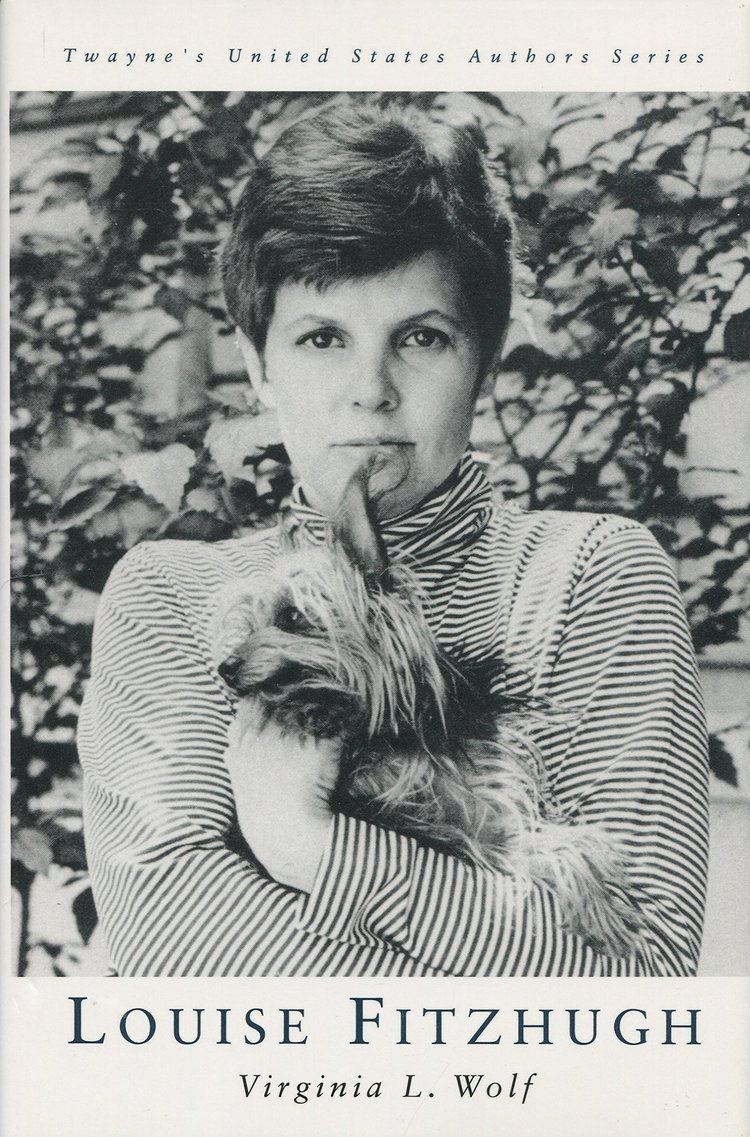Occupation Writer, illustrator Name Louise Fitzhugh Nationality United States Role Writer | Period 1959-1974 Parents Millsaps Fitzhugh Education Barnard College | |
 | ||
Born October 5, 1928Memphis, Tennessee, USA ( 1928-10-05 ) Movies Harriet the Spy, Harriet the Spy: Blog Wars Books Harriet the Spy, The Long Secret, Nobody's Family Is Going to, Harriet Spies Again, Harriet the Spy - Double A Similar People Bronwen Hughes, Greg Taylor, Vanessa Lee Chester, Ron Oliver, Douglas Petrie | ||
2014 louise fitzhugh living legacy award video
Louise Fitzhugh (October 5, 1928 – November 19, 1974) was an American writer and illustrator of children's books, known best for the novel Harriet the Spy. Her other novels were two Harriet sequels, The Long Secret and Sport, and Nobody's Family is Going to Change.
Contents
- 2014 louise fitzhugh living legacy award video
- Read More Recs Harriet the Spy by Louise Fitzhugh
- Early life
- Career
- Death
- Works
- Awards
- References

Read More Recs: Harriet the Spy by Louise Fitzhugh
Early life
Fitzhugh was born in Memphis, Tennessee, to wealthy parents in 1928. Her parents divorced when she was an infant and her father, Millsaps Fitzhugh, gained custody; she lived with him in the South. She attended Miss Hutchison's School and three different universities. She lived in Washington, D.C.; France; and Italy.
She attended Bard College where she became involved in politics and anti-racism. She also studied at the Art Students League and the Cooper Union. She lived most of her adult life in New York City and had houses in both Long Island and Bridgewater, Connecticut.
Career
Fitzhugh was the illustrator of the 1961 children's book Suzuki Beane, a parody of Eloise; while Eloise lived in the Plaza, Suzuki was the daughter of beatnik parents and slept on a mattress on the floor of a Bleecker Street pad in Greenwich Village. Fitzhugh worked closely with author Sandra Scoppettone to produce Suzuki Beane, which incorporated typewriter font and line drawings in an original way. Although a parody of both Eloise and beatnik conceit, the book sprang to life as a genuine work of literature. Today, it is a much sought-after book on used-book websites.
Fitzhugh's best-known book was Harriet the Spy, published in 1964 to some controversy since so many characters were far from admirable. It has since become a classic. According to her New York Times obituary, published November 19, 1974: "The book helped introduce a new realism to children's fiction and has been widely imitated". Harriet is the daughter of affluent New Yorkers who leave her in the care of her nanny, Ole Golly, in their Manhattan townhouse. Hardly the feminine girl heroine typical of the early 1960s, Harriet is a writer who notes everything about everybody in her world in a notebook which ultimately falls into the wrong hands. Ole Golly gives Harriet the unlikely but practical advice that: "Sometimes you have to lie. But to yourself you must always tell the truth". By and large, Harriet the Spy was well-received—it was named to the New York Times Outstanding Book Award list in 1964—and has sold 4 million copies since publication. It was very popular among young girls, particularly unfeminine or non-conforming girls who lacked representation in fiction; Fitzhugh, like many of Harriet's fans, was a lesbian.
Two characters from the book, Beth Ellen and Sport, were featured in two of Fitzhugh's later books, The Long Secret and Sport. The Long Secret deals fairly honestly with female puberty; the main characters are pre-teen girls who discuss how their changing bodies feel.
Another young adult manuscript, Amelia, concerned two girls falling in love. This manuscript was not published and was later lost.
Fitzhugh illustrated many of her books and had works exhibited in Banfer Gallery, New York, in 1963, among many other galleries.
Death
Fitzhugh died in 1974 of a brain aneurysm. Her obituary was published in The New York Times.
Works
Published during her lifetime:
Published posthumously:
